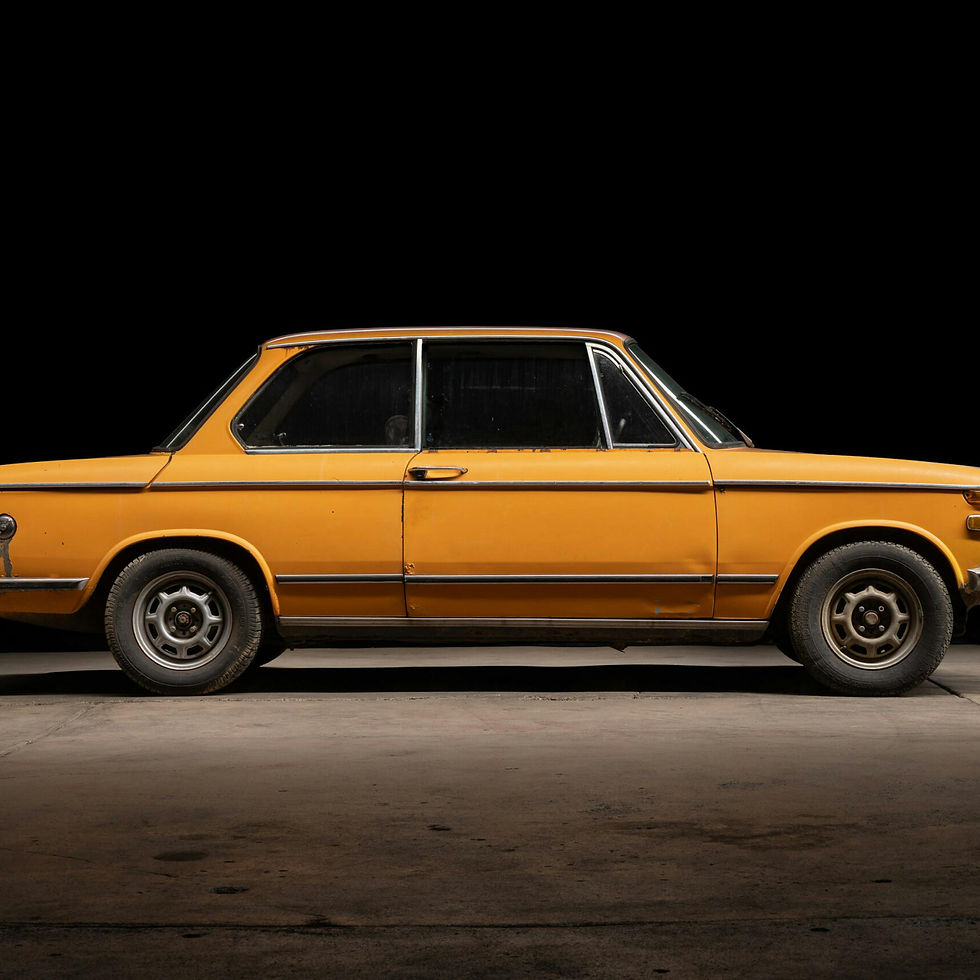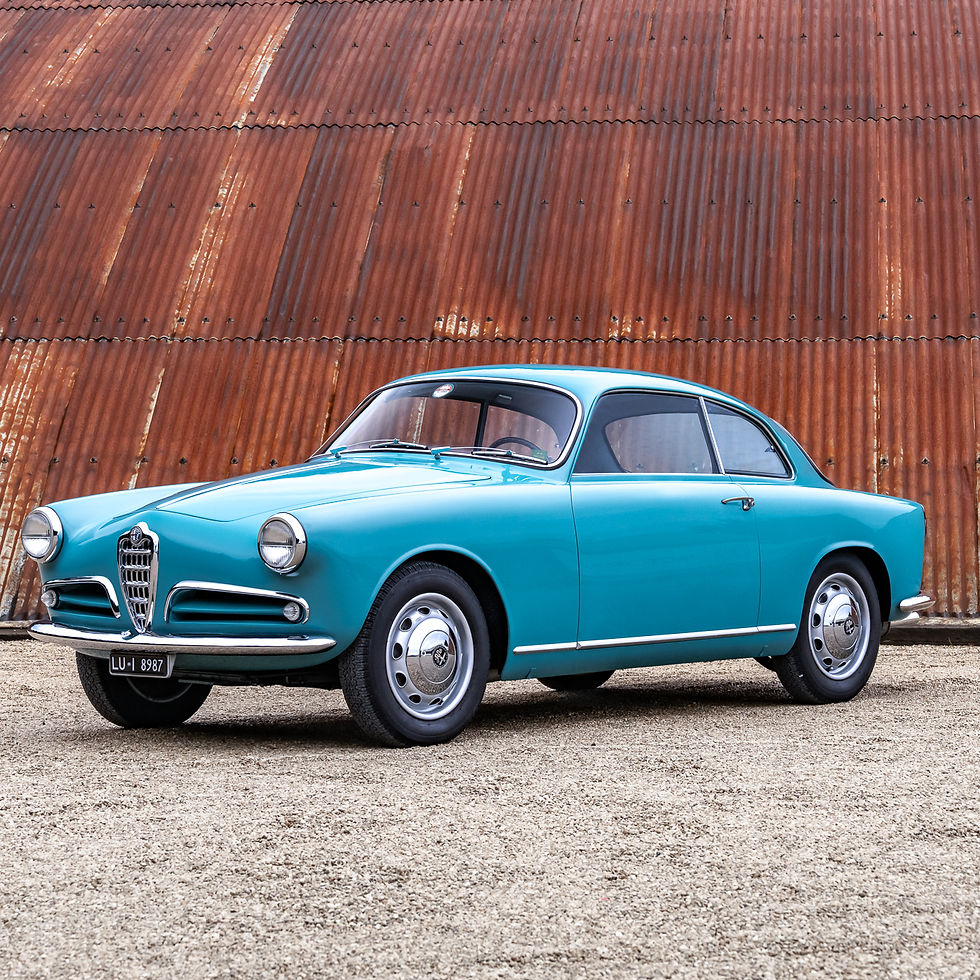Aston Martin, the company now known for building some of the UK’s sleekest sports cars for consumers and spies alike, was founded in 1913 with the intention of selling Singer vehicles and repairing GWK and Calthorpe models. Founders Lionel Martin and Robert Bamford created the first car badged as an Aston Martin when they fit a four-cylinder Coventry-Simplex engine into a 1908 Isotta Fraschini.
Following a brief pause caused by the First World War, the company produced a few race cars and consumer cars before facing financial trouble in 1924 and selling their assets to Dorothea Mary Roby Thorpe, wife of Godfrey Benson, 1st Baron of Charnwood. Bill Renwick and Augustus Bertelli joined Dorothea and began producing racing and passenger cars from 1926 to 1937 before the Second World War once more paused production. In 1947, English industrialist David Brown became Aston Martin’s latest owner after purchasing it for £20,500 from an ad in The Times. Thus began the production of the hailed DB series of sports cars.
The DB1, based on the Atom prototype, sold only 15 units from 1948 to 1950 before being replaced by the DB2. Being a more advanced and refined unit, the DB2 sold 411 examples from 1950 to 1953 in multiple body configurations. It, too, was replaced in 1951 with the racing-only DB3 and the grand touring DB2/4 Mark I and II in 1953 and 1955, respectively.
In 1957, the Aston Martin DB Mark III was introduced as a successor to the DB2/4 Mark II despite never officially being called the DB 2/4 Mark III. The car was redesigned by Polish engineer Tadek Marek and used an evolved version of the DB2/4 Mark II’s Lagonda straight-6 engine. The standard, twin SU carburetor-powered engine produced 162 hp, although an optional dual exhaust raised that number. A mid-level “DBD” trim level with triple SU 1.75″ carbs and dual exhaust produced 180 hp and was fitted to 47 cars. In contrast, a high-output “DBB” trim featured triple twin-choke Weber 35 DCO 3 carbs, special long-duration camshafts, high compression 8.6:1 pistons, and the dual-exhaust system was rated at 195 hp but was ordered on only 10 cars. All engines were backed by a four-speed manual or an optional automatic transmission.
The DB 2/4 Mark III came standard with Girling disc brakes after the first 100 examples. This was also the first model to come equipped with the Bert Thickpenny-designed front grille, which would become a staple of all future Aston Martins. The car could be had as either a drophead or fixed-head coupé or a hatchback. Only 551 examples of the Mark III were produced in the two-year production run, with only 83 of them being in left-hand drive configuration.
Thanks to their low production numbers and timeless good looks, the DB 2/4 Mark III has seen strong collectability over the years. They remain an important and storied portion of Aston Martin’s history, and their importance is backed by the strong pricing we still see them bring in what seems to be an increasingly modern collectible market landscape. As with any early British sports car, restoration on these can become a pocket-draining expense very quickly, so finding one that has already been properly restored, with correct and careful ownership to ensure long-term useability, is paramount.
This particular example is 1-of-83 LHD units to leave the factory. Chassis # AM/300/3/1672, was built in September of 1958 and dispatched to Charles H. Hornburg Jnr Inc. of Los Angeles, CA in January of 1959 as per the British Motor Industry Heritage Trust records. The car wore a Satin Bronze exterior with an Off-White interior, Firestone Super Sports whitewall tires, and the optional fully chromed wheels.
It was delivered to its first owner, Mr. Saul Pollack of Los Angeles, CA, in April 1959. Mr. Pollack was the owner of the Waverly Mansion, president of Karl’s Shoe Stores, and brother-in-law to Mr. Harry Karl, Debbie Reynolds’s second husband and adoptive father of Todd and Carrie Fisher. Mr. Pollack married Mr. Karl’s sister, Sarah.
The Aston Martin made its way back to the UK to its second owner in October of 1991. The car was registered in Lancaster, Lancashire, with the license plate VSK 659. In March of 1992, it was sold to its third owner from Hayward Heath, also in the UK, and once again to its fourth owner in April of 1993.
In 2002, the car traveled overseas once more to its fifth owner, Baron Paul van der Straten Waillet, in Belgium, where it adopted the license plate VDY 993. The service records on file start around 2006 under Mr. Van der Straten Waillet’s ownership, showcasing the care and attention he put into keeping this British wonder on the road. A major service in September of 2007 at Twin Cam (now Marreyt Classic Cars) in Aalst gave this Aston a new 8.6:1 83mm piston set, cylinder liners, head gasket, water pump, radiator, and other new parts. A return visit in April of 2011 resulted in a new power steering rack. Later, in September 2013, the headlights, mirrors, as well as both horns were replaced with units from RetroClassic Car Parts Ltd.
In October 2013, the Aston was sold to its sixth and most current owner. Under their ownership, the extensive catalog of service records continued to expand exponentially. In November of that same year, a new horn button assembly and bonnet lamp mount were purchased from Kevin Kay Aston Parts in Redding, CA. In December, the original Aston Martin “Instruction Book” was masterfully restored by Ann-Marie Miller ACR in London for a total cost of £615.50 in an effort to preserve it for decades to come. In August 2014, the car was stripped and repainted in Fern Green by Frankie’s Auto Paintwork, a color it still wears today.
NOS Lucas Le Mans headlights were bought in January 2016 from Rogers Motors in Shutesbury, MA. The headliner and trunk panels were replaced with new, factory-type material in September 2016 by Harry Fraser Vehicle in Bicester, UK. From May to June of 2017, the windshield wiper assembly was restored by Leydon Restorations LLC in Lahaska, PA, with special attention given to repairing the wiper park mechanism. Lastly, in March of 2021, the clutch was replaced by Automotive Restorations, Inc. in Stratford, CT.
Being a fairly early Aston Martin makes this DB 2/4 Mark III a rare example of the company’s beginnings. It represents a turning point in the British marque’s story from a largely boutique maker to a more household name in sports and racing cars. Described as “one of the world’s outstanding sports models” by The Autocar magazine, this model was also the first James Bond Aston Martin, being featured in the 1959 “Goldfinger” novel as the “DB III.”
This particular example is, without a doubt, one of the nicest to hit the market. Benefitting from decades of meticulous care dating back to its original owner, this Aston Martin DB 2/4 Mark III is as beautiful as it is rare, with only 83 examples being originally produced in LHD configuration. Its previous prestigious owners, along with the countries it has traveled to, give this car a unique pedigree that sets it apart from others in the crowd and would instantly complement any existing car collection.
Upon purchase, the new owner will receive the original factory manuals, the original factory build sheet, an original dealer brochure, the BMIHT Certificate, the car’s FIVA Identity Card, a period article about the model, two Concours awards, as well as the service and ownership records on file.
EXTERIOR
Body And Paint
Quite fitting in this shade of green, this DB2/5 MKIII shows well overall. It has consistent panel gaps, is straight down the sides, and the paint has a deep luster. The body has clearly been prepped well in terms of how straight the panels are, with no major issues standing out. However, we can classify the presentation of the paint today as good driver quality as it is revealing its age in a few spots. While it would not prevent the car from proudly being shown or driven regularly, there are some inconsistencies as listed below and photoed.
Glass And Trim
All of the glass appears to be the correct factory TriPlex glass, with the exception of the passenger vent window which has no markings. The condition of the glass is acceptable, considering the overall age. The windscreen has some light peppering, and the side glass shows a light scratch here or there, with the hatch glass showing two minor pencil-point-sized chips. The trim is all present and appears to have been well looked after, with all emblems and badges present, including some period additions. The door handles and window chrome are the only areas where there are some obvious signs of age, as photographed. Overall not worth addressing for those intending to drive rather than show.
Wheels
The wire wheels are consistent with the idea of a driver-quality car. They are showing some age in the way of chrome fade and scratching and other such flaws as photographed. Again, good for driving, but they should see attention if the intention is to competitively show this Aston Martin.
Notable Flaws
The base of the driver's side A-Pillar shows some texture inconsistency in the paint and a crack in the paint. On the bonnet near the same spot is a small area of paint lifting and a small area of solvent popping. The base of the passenger A-Pillar also shows a small bubble and a crack. The passenger door top shows a bubble and a crack as well. Further inspection will show a handful of small pencil point sized knicks in the paint throughout, commensurate with the use this car did see during its last ownership. The fog lights also have some chrome that is showing their age. Please review the photos in detail to see these flaws and any other flaws that may have been captured.
INTERIOR
Seats And Surfaces
The interior is perfectly contrasted with the exterior color with a rich natural leather presentation. The Green piping and aging that is present give it an inviting and genuine feel. The interior is, overall, excellent and was clearly restored all at the same time many years ago to a high standard. There was careful attention paid to elements of correctness, and the quality of craftsmanship is apparent. The door jams are nicely and correctly tended to with newer chrome and rubber as is correct. The dash is the proper finish, as are the fascia, kick panels, mats, and tunnels. All are in excellent condition, with perhaps some patina. The headliner and visors are all nicely refinished, and overall, the interior is impressive right down to the correct original mat in the trunk. There are some areas to mention that could see attention, though not totally necessary. The gauge bezels for the RPM and MPH gauges do have chrome that is failing, and there is some paint worn off on the steering column adjuster as well as some touch-up on the dash where it meets the steering column. Otherwise, this is a well-appointed and well-cared-for interior that has seen a proper refurbishment some years ago.
Functionality And Accessories
Our testing of the various knobs, pulls, and switches in the car revealed that it is indeed in correct working order throughout. Lighting, windshield wipers, heater motor, etc… all appeared to be in correct working order with no issues to note.
ENGINE BAY AND TRUNK
Engine Bay
The engine bay of this car shows that it has received proper care from knowledgeable custodians and technicians. There was particular attention paid to correctness in the engine bay. Between the various coatings, clamps, correct style wires, stickers, and a general not-to-polished presentation that alludes to how it may have left the factory. A few incorrect items that are minor stand out, such as the new fuel line which we had replaced for safety. One extra spark plug is a little rusty, and the battery is not a correct replica. An extra correct style battery is included along with the original fuel line.
Trunk Area
The trunk area is tidy; removing the protective mat reveals the original-style mat, albeit cracked from age and under that clean and shiny green paint. Digging deeper, we can access the spare wheel handle, which has been correctly restored to exactly as it left the factory, utilizing a period-correct military-grade fabric with a wooden handle to allow the spare to drop.
Underside
The underside is very much representative of the excellent driver-quality example that this car is. It is solid, complete, and showing to be well serviced, but perhaps a little oily, greasy, and dirty here or there, as to be expected with a turn-key and reliable British Car. Please refer to the photos to have a closer look.
Notable Flaws
The engine bay light on the underside of the bonnet, while correct and present, does not currently light up.
MECHANICALS
Engine
The engine starts easily, runs strong, makes strong oil pressure, and remains cool. It is a well-sorted example.
Transmission
The 4-speed transmission works as well as a 1958-designed transmission can, with no issues to note. It should be noted that the clutch in this car is brand new.
Brakes And Suspension
The steering and suspension feel responsive and as stiff as they were originally intended by Aston Martin in 1958. Overall, it feels well-serviced and in order. The brakes work well, with no pulling and a strong pedal. As always, it is our recommendation that this car be inspected by a mechanic by the new owner before rigorous use to ensure all systems are in order, as this car has not seen the regular use it was used to in the past two years.
Tires
The tires are the period-correct style Firestone Deluxe Champion 6.00-16 92P’s on all four corners with date codes of 2014. Technically, they should see replacement, but there are no signs of cracking, and they are still supple to the touch.


































































